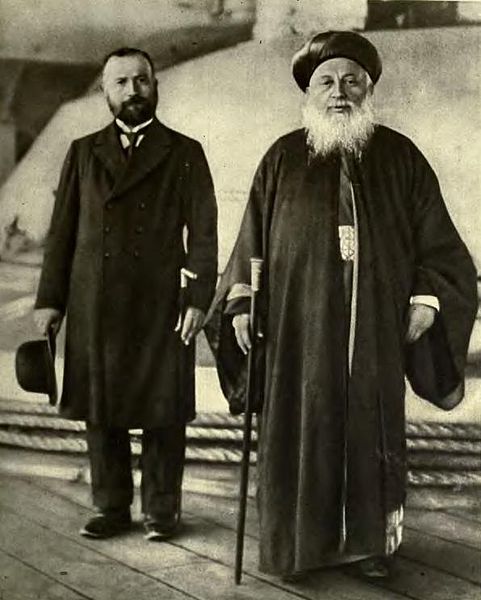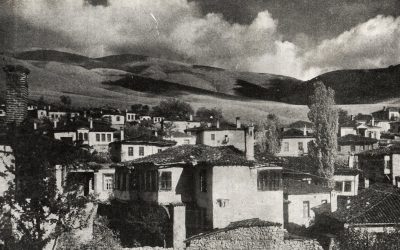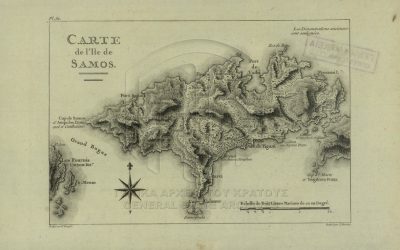By Alexandra Kiritsy & Gregory Kontos
When Jewish colonists were brought to the newly founded city of Macedonia around 315 B.C., no one could have imagined that Thessaloniki’s history would be closely associated with Jewish history throughout the centuries. About four centuries later, in 52 A.D., when Apostle Paul visited the city to spread the Gospel, and even until the late Byzantine period, Thessaloniki had a significant Jewish population, the so-called “Romaniotes”, however, it was not until the second half of the 15th century and mass Jewish emigration from Western Europe that Thessaloniki, by then an Ottoman city, became the “Jerusalem of the Balkans” or “La Madre de Israel”, as the great majority of the community consisted of Jews expelled from Spain in 1492, the so-called “Sephardis”, “Spanish” or “Hispanic” in Hebrew.
Dozens of thousands were the Jews of Thessaloniki during the Ottoman period, though the numbers provided by European and Ottoman explorers highly differ. According to an Ottoman firman (decree) of 1828, Jews were four or five times more than their Greek neighbors in the city. In a census of 1913, run after the city’s conquest by the Greek Army in 1912, the Jewish population of the city numbered 61,439 souls or 38.9% of the entire city’s population, by far outnumbering Christians and Muslims. In 1915 the Jews of Thessaloniki took part in the Greek elections and can be found in the corresponding voter list, available on Greek Ancestry (click here).
Of course, when we mention the Jews of Thessaloniki, who exactly were these individuals who once walked the earth as we do now? Indeed, it is the work of family history and genealogy that willingly answers this question. In this article, we allow for glimpses into the lives of the members of the Hassid family of Thessaloniki starting in mid-19th century through the time of World War II. The end of the time period just mentioned unmistakably holds in its hand the mass murder of millions of Jewish people, an event which unfortunately did not spare the Hassid family. That being said, the purpose of this article is to not only remember an unforgettable tragedy, but to also bring to the foreground the names and the stories of real people who once belonged to a prospering, vibrant, and important community in the north of Greece; people who are quite often forgotten in mainstream Greek hamily history and genealogy because of their different ethnic or religious backgrounds.

The first generation we will start with begins with a man named Isaac Hassid, who was a lawyer in Thessaloniki, born in the year 1860 to Samuel and Gratsi. Given his occupation, we can infer that his family was likely of the upper middle class. Isaac and his wife, Bolissa had at least three children that we know of named Julia, Samuel and Moises Hassid. Samuel was born about 1890 and was married in April of 1916 to Ester Koen, daughter of Menahem Koen. Samuel and Ester had four children: Isaac, Beatrice, Fina, and Michel-Menahem. According to their birth certificates the family lived at the south-eastern part of Thessaloniki, on Botsari Street of the Agia Triada neighborhood, an area generally inhabited by Jews.
In August 1917, a terrible fire broke up burning most part of the densely-Jewish-populated old city center and leaving about 50,000 Jews homeless. The fire did not spread into Agia Triada, so the family was once lucky. However, 16 of the city’s 33 synagogues were burnt down, together with the Grand Rabbinate and its archives! And, unfortunately, the tragedies of the Jewish comunity did not end in 1917. The Hassid family was lucky that time, but no one could have imagined what was about to come just a couple of decades later.
Nazi Germany invaded Greece on April 6th, 1941, and, on the 9th, they were entering Thessaloniki. The Grand Rabbi was arrested on May 17th and in June Jewish archives were plundered and shipped to Frankfurt. Some signs existed, but no one could imagine the unimaginable, and as during the following year no big antisemitic action was taken, the Jews of Thessaloniki remained relatively calm; calm… until the Black Shabbat (Black Saturday), on July 11th 1942, and the public humiliation of all male Jews aged 18 to 45 in the city center. Deportations began in March of 1943 and about 54,000 of Thessaloniki’s Jews were murdered in concentration camps.
Samuel Hassid, and his son, Michel-Menahem, were in one of the first convoys and were murdered in Auschwitz in March 1943, according to the database of the Jewish Museum of Thessaloniki. Samuel’s mother and brother had the same fate. Ester Koen, Samuel’s wife and Michel’s mother, was murdered on May 10th, in Auschwitz. To find out more on the fate of this family, Greek Ancestry reached out to the Auschwitz Archives in Poland. Information was available only for Beatrice, Samuel’s and Ester’s daughter:
“HASSID Beatrice (date and place of birth unknown) was deported to KL Auschwitz in an RSHA transport from the Ghetto in Salonika that arrived to the camp between May 8 and May 9, 1943. In the camp, she was assigned prisoner number 44486. On August 21, 1943 her death in the camp was noted.”
The Hassid and Koen families of Thessaloniki were murdered and only those members of theirs who had emigrated before the war survived. No one, including the emigrants, could have imagined what eventually happened. The tragedy was unbelievable but real, and life and freedom proved less obvious than they seem to us today. It just took an unstable man, racism and challenging social circumstances.
Share your story or consider making a donation by clicking here, and make your yiayia proud!



